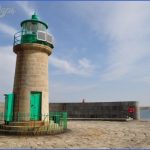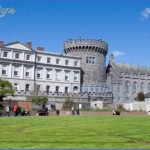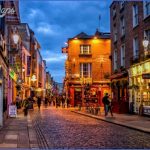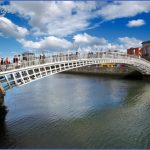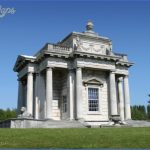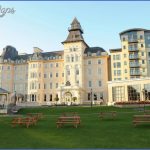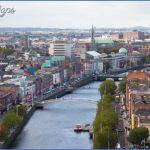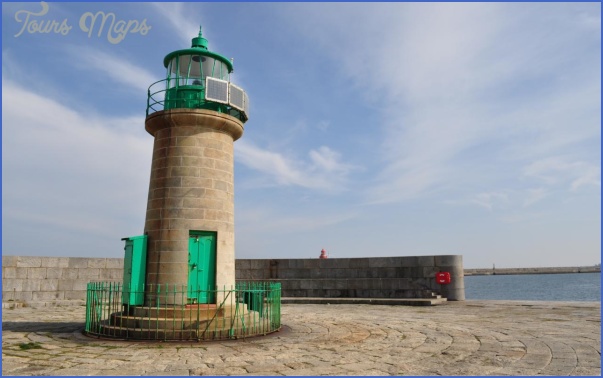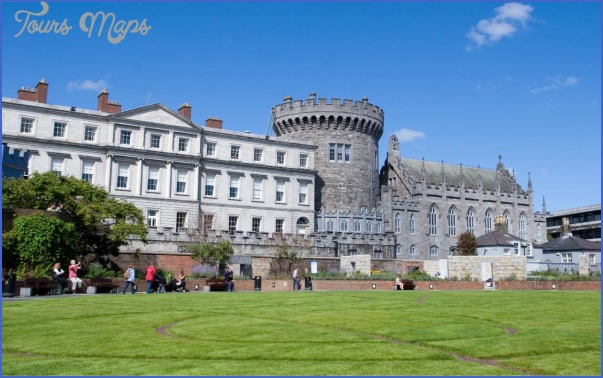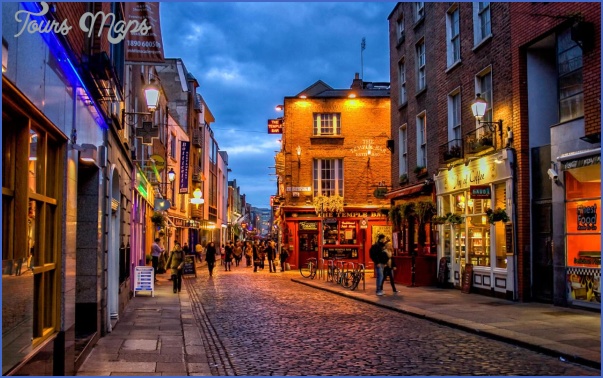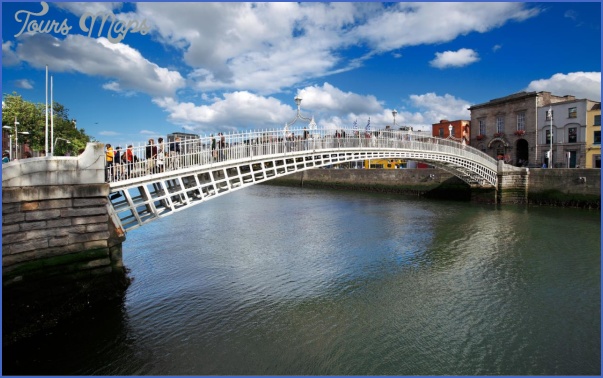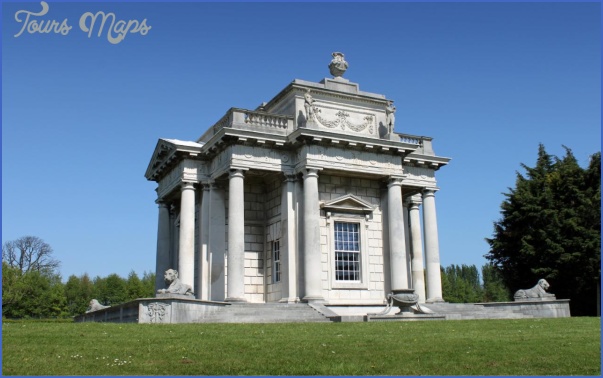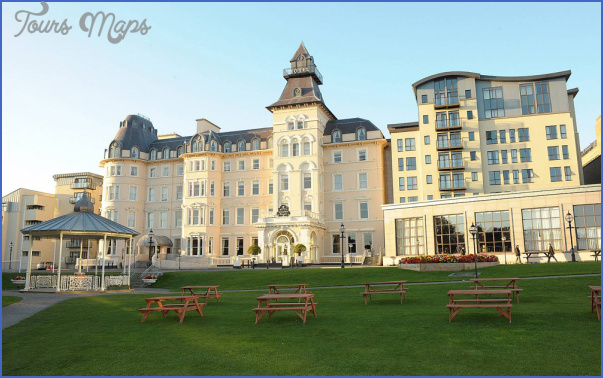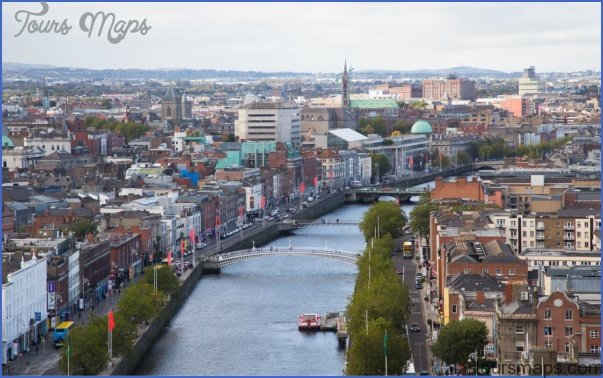Dublin Travel Destinations
SIGHTS
Most of Dublin’s sights lie less than 2km from O’Connell Bridge. The Historical Walking Tour provides a 2hr. summary of Irish history, stopping at a variety of sights. Meet at Trinity College’s main gate. ( 878 0227. Tours May-Sept. M-F 11am and 3pm; Sa-Su 11am, noon, and 3pm. Oct.-Apr. F-Su noon. ‚10, students ‚8.)
TRINITY COLLEGE AND ENVIRONS. The British built Trinity College in 1592 as a Protestant religious seminary that would civilize the Irish and cure them of Popery. Jonathan Swift, Robert Emmett, Thomas Moore, Edmund Burke, Oscar Wilde, and Samuel Beckett are just a few of the famous Irishmen who studied here. Look for the bullet holes from the Easter Rising that still mar the stone entrance. (Between Westmoreland and Grafton St. The main entrance is on College Green. Pearse St. runs along the north edge of the college, Nassau St. to its south. Grounds open 24hr. Free.) Trinity College Walking Tour is run by students and concentrates on University lore. (June-Sept. daily 10:15am-3:40pm; Mar.-May weekends only. Tours leave roughly every 45min. from the info booth inside the front gate. Includes admission to the Old Library. ‚7, students ‚6.) The Old Library holds a priceless collection of ancient manuscripts, including the magnificent Book of Kells, 9th-century illustrated volumes of the Gospels. (From Trinity’s main gate, go straight; the library is on the south side of Library Sq. Open June- Sept. M-Sa 9:30am-5pm, Su noon-4:30pm; Oct.-May M-Sa 9:30am-5pm, Su noon-4:30pm. ‚6, students and seniors ‚5.) The few blocks south of College Green are off-limits to cars, but are ground zero for shopping tourists and residents. Grafton Street’s street performers range from string octets to jive limboists. Upstairs at the Grafton St. branch of Bewley’s Restaurant and inside the chain’s former chocolate factory is the Bewley’s Museum, which includes tea-tasting machines and an overview of the company’s history. (Grafton St. Open daily 7:30am-llpm. Free.)
KILDARE STREET AND TEMPLE BAR. The Natural History Museum displays fascinating examples of classic taxidermy, including enormous Irish deer skeletons (Upper Merrion St. Open Su 2-5pm and Tu-Sa 10am-5pm. Free.) The National Museum of Archaeology and History, Dublin’s largest museum, has extraordinary artifacts spanning the last two millennia, including the Tara Brooch, the Ardagh Hoard, and other Celtic gold work. Don’t miss the bloody vest of nationalist James Connelly. (Kildare St. adjacent to Leinster House. Open Su 2-5pm and Tu-Sa 10am-5pm. Free.) The National Gallery has a collection of over 2400 paintings, including canvases by Bruegel, Caravaggio, Goya, El Greco, Rembrandt, and Vermeer. (Merrion Sq. West. Open M-W and F-Sa 9:30am-5:30pm, Th 10am-8:30pm, Su noon-5pm. Free.) The National Library chronicles Irish history and exhibits literary goodies in its entrance room. A genealogical research room can help families trace the thinnest roots of their Irish family tree, which will inevitably reach back to the kings of Ireland. (On Kildare St. Open M-W 10am-9pm, Th-F 10am-5pm, Sa lOam-lpm. Free.) Visit Leinster House, the former home of the Duke of Leinster. Today, the House provides chambers for the Irish Parliament. It holds both the Dail (DOIL), which does most of the government’s work, and the Seanad (SHAN-ad), the less powerful upper house. The Dail meets from October to Easter Tu and W 3-9pm, and Th 10am-3pm. Visitors can view the proceedings by contacting the Captain of the Guard, who conducts tours of the galleries. (678 9911. Passport necessary. Tours leave from the adjacent National Gallery on the hour.) West of Trinity, between Dame St. and the Liffey, the Temple Bar neighborhood has rapidly become one of Europe’s hottest nightspots. Narrow cobblestone streets link cafes, theaters, rock venues, and used clothing stores. The government-sponsored Temple Bar Properties spent over ‚40 million to build a fleet of arts-related attractions. Among the most inviting are: The Irish Film Centre, which screens specialty and art house film, Ireland’s only Gallery of Photography, and the Temple Bar Gallery & Studios. (The Irish Film Centre, 6 Eustace St. Gallery of Photography, Meeting House Sq. Temple Bar Gallery & Studios, 5-9 Temple Bar.)
DAME STREET AND THE CATHEDRALS. King John built Dublin Castle in 1204 on top of the Viking settlement of Dubh Linn. For 700 years after its construction, it was the seat of British rule in Ireland. As part of the independence movement, fifty insurgents died at the castle’s walls on Easter Monday, 1916. Since 1938, each president of Ireland has been inaugurated here. (On Dame St. at the intersection of Parliament and Castle St. Open M-F 10am-5pm, Sa-Su 2-5pm. ‚4.50, students and seniors ‚3.50. Grounds free.) Housing an eclectic collection including illustrated books by Matisse and Chinese snuff bottles, the Chester Beatty Library, behind Dublin Castle, is a truly unique library. Honorary Irish citizen Alfred Chester Beatty was an American rags-to-riches mining engineer who bequeathed his entire collection of Asian art, sacred scriptures, and illustrated texts to Ireland upon his death. Now you can er\joy his library, as well as special exhibits and public lectures held there. (Open Su
l-5pm, Tu-F 10am-5pm, Sa llam-5pm. Free.) St. Patrick’s Cathedral, Ireland’s largest, dates to the 12th century, although Sir Benjamin Guinness remodeled much of it in 1864. Jonathan Swift spent his last years as Dean of St. Patrick’s, and his crypt is above the south nave. (On Patrick St. Take bus #49, 49A, 50, 54A, 56A, 65, 65B, 77, or 77A from Eden Quay. Open Mar.-Oct. daily 9am-6pm; Nov.-Feb. Sa 9am-5pm, Su 9am- 3pm. ‚4. Students, seniors, and children free.) Sitric Silkenbeard, King of the Dublin
Norsemen, built a wooden church on the site of the Christ Church Cathedral around 1038; Strongbow rebuilt it in stone in 1169. Further additions were made in the following century and again in the 1870s. Now, stained glass sparkles above the raised crypts, and fragments of ancient pillars are scattered about like bleached bones. (At the end of Dame St. across from the castle. Take bus #50 from Eden Quay or 78A from Aston Quay. Open daily 9:45am-5:30pm except during services. Suggested donation ‚3.) Finally, stop by St. Audoen’s Church, High St. Dublin’s oldest parish. Don’t confuse this Norman-built church with the much more modem (much more Catholic) church of the same name; you might upset the vicar. (Open Sa-Su 2:30- 5pm). St Audoen’s Arch, built in 1215 and now obscured by a narrow alley, is the only surviving gate from Dublin’s medieval city walls.
GUINNESS BREWERY AND KILMAINHAM. Guinness brews its black magic at the St. James Gate Brewery, next door to the Guinness Storehouse. In 1759, farsighted Arthur Guinness signed a 9000-year lease for the original 1759 brewery. The lease is displayed in the Storehouse’s atrium, an architectural triumph that rises seven floors around a center shaped like a pint glass. View the exhibit on Guinness’s infamously clever advertising and then drink, pilgrim, drink. (St. James’s Gate. From Christ Church Cathedral, follow High St west through its name changes: Commarket, Thomas, and James. Take bus #51B or 78A from Aston Quay or #123 from O’Connell St Open Apr.-Sept. daily 9:30am-7pm; Oct.-Mar. 9:30am-5pm. ‚12, students ‚8, seniors and children ‚5.30.) Almost all of the rebels who fought in Ireland’s struggle for independence from 1792-1921 spent time at Kilmainham Gaol. Tours wind through the chilly limestone corridors of the prison and end in the haunting execution yard. (Inchicore Rd. Take bus #51 or 79 from Aston Quay or #51A from Lower Abbey St. Open Apr.-Sept. daily 9:30am- 4:45pm; Oct.-Mar. M-F 9:30am-4pm, Su 10am-4:45pm. ‚4.40, seniors ‚3.10, students and children ‚1.90.) Built in 1679 as a hospice for retired and disabled soldiers, Hie Royal Hospital Kilmainham, Military Rd. now houses the Irish Museum of Modem Art. The hospital’s facade mimics Les Invalides in Paris; the Baroque chapel is also stunning. (Open Su noon-5:30pm, Tu-Sa 10am-5:30pm. Guided tours Su 12:15pm, W, and F 2:30pm. Free.)
O’CONNELL STREET AND PARNELL SQUARE. O’Connell St. is Dublin’s biggest shopping thoroughfare, and at 45m it was once Europe’s widest street as well. Statues of Irish leaders such as Daniel O’Connell, Charles Parnell, and James Larkin adorn the street’s traffic islands. One monument you won’t see is Nelson’s Pillar, a free standing pillar that commemorated Trafalgar and stood outside the General Post Office for 150 years. In 1966, the IRA celebrated the 50th anniversary of the Easter Rising by blowing the admiral out of the water. Follow O’Connell St. to get to Parnell Sq. home of The Hugh Lane Municipal Gallery of Modern Art. In the early 20th century, Dubliners refused to finance the museum that was to hold American artist Lane’s collection of French Impressionist paintings; although the gallery was eventually constructed, Yeats lamented his city’s provincial attitude in a string of poems. (Parnell Sq. Buses #3,10,11, 13, 16, and 19 all stop near the gallery. Open Su llam-5pm, Tu-Th 9:30am-6pm, F-Sa 9:30am-5pm. Free.) Not just a fine place to send a letter, the General Post Office, O’Connell St, was the nerve center of the 1916 Easter Rising; Patrick Pearse read the Proclamation of Irish Independence from its steps. When British troops closed in, mailbags became barri-cades. Outside, a number of bullet nicks are still visible. (Open Su 10am-6:30pm, M-Sa 8am-8pm.) The city’s rich literary heritage comes to life at The Dublin Writers’ Museum, which displays rare editions, manuscripts, and memorabilia of Samuel Beckett, Brendan Behan, Patrick Kavanagh, Sean O’Casey, G.B. Shaw, Jonathan Swift, Oscar Wilde, and W.B. Yeats. (18 Parnell Sq. North. Open June-Aug. M-F 10am- 6pm, Sa 10am-5pm, Su llam-5pm; Sept.-May M-Sa 10am-5pm. ‚5.50, students and seniors ‚5. Combined ticket with James Joyce Centre ‚8.) The James Joyce Cultural Centre fea-
Dublin Travel Destinations Photo Gallery
Maybe You Like Them Too
- Explore Les Accates, France with this Detailed Map
- Explore Góra Kalwaria, Poland with this detailed map
- Explore Gumdag, Turkmenistan with this detailed map
- Explore Telfes im Stubai, Austria with this detailed map
- Explore Langenselbold, Germany with this detailed map

